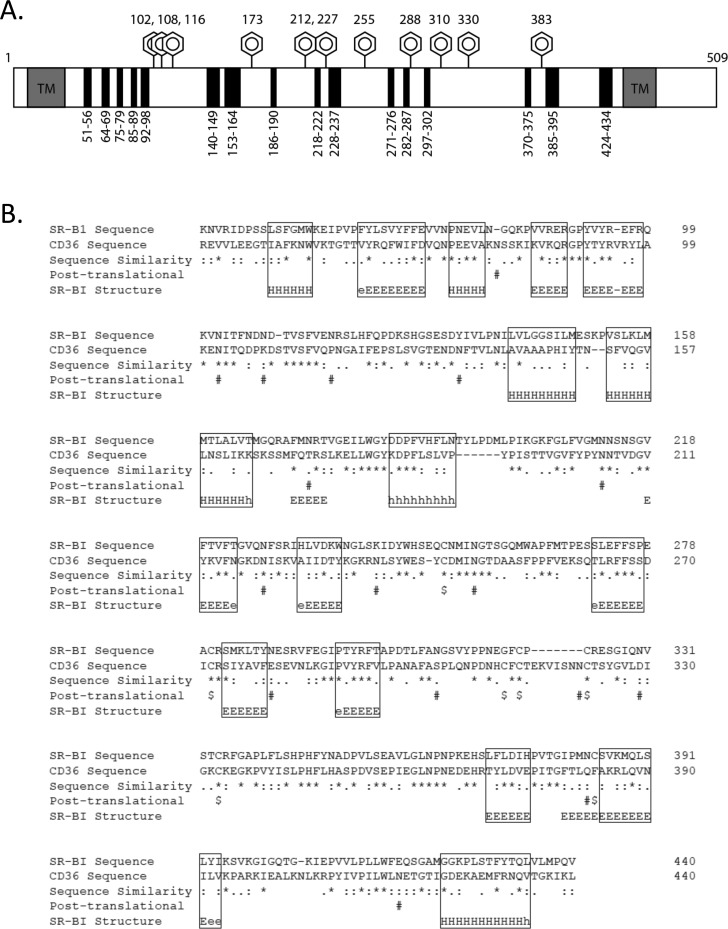Figure 1.
Schematic and design of SR-BI/CD36 chimeric receptors. (A) Panel of SR-BI/CD36 chimeras created by replacement of small regions of SR-BI sequence with the corresponding CD36 sequence with a similar secondary structure (avoiding sites of glycosylation and disulfide bonds). Shown is a linear representation of SR-BI, with boxed gray regions representing the N- and C-terminal transmembrane domains (TM), black boxes representing all swapped regions (with residue ranges), and hexagons marking residues that harbor N-linked glycosylations. (B) SR-BI (GenBank accession number Q61009) and CD36 (GenBank accession number AAH72543) sequences were aligned using ClustalW, and secondary structure prediction was conducted using Jpred. Boxed regions represent sequences with similar secondary structures. The symbols represent the following: asterisks for fully conserved residues, colons for highly similar residues, periods for weakly similar residues, dollar signs for Cys residues, number signs for Asn residues of the N-linked glycosylation consensus sequence, E for extended (β sheet), H for α helix, and dashes for random coils.

